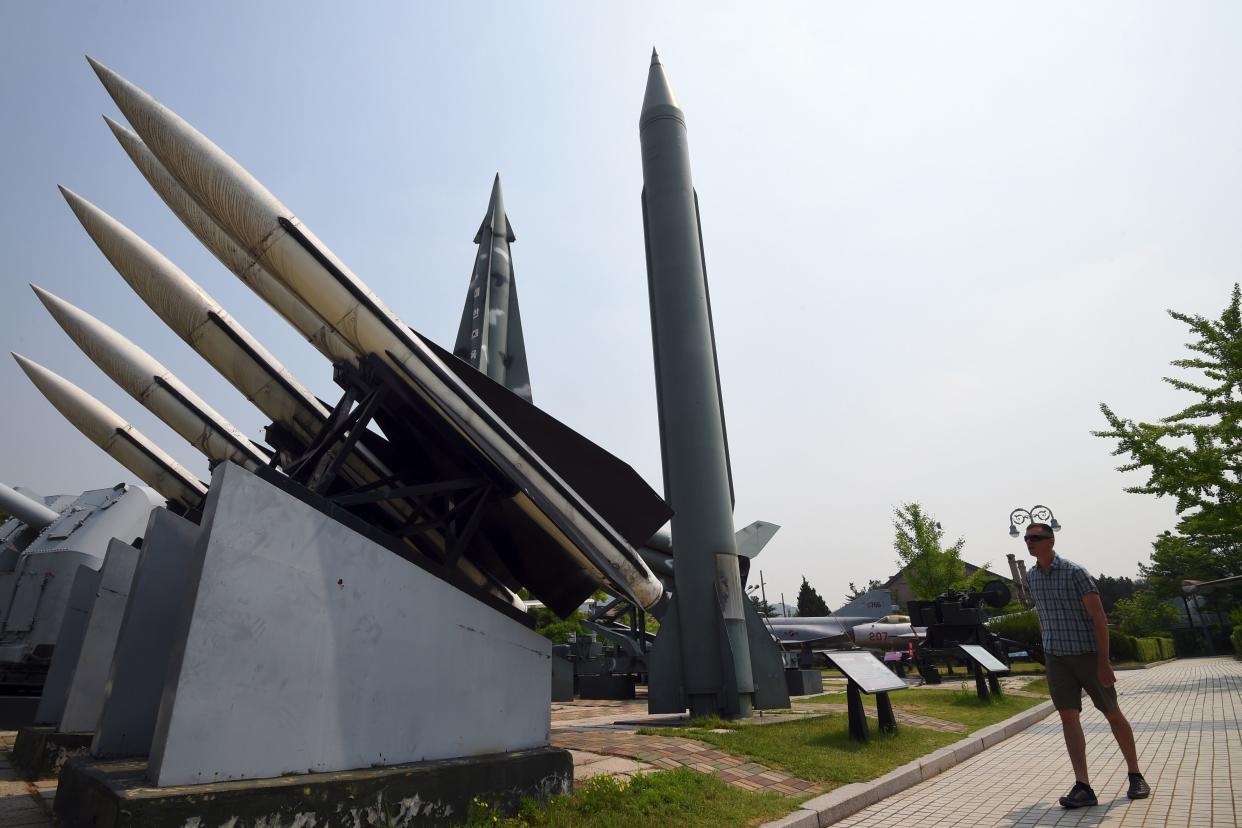North Korea Tests More Missiles A Day After THAAD Is Suspended

The North Korean cruise missiles test-fired Thursday were designed to sink enemy ships and similar to Russian Kh-35 anti-ship projectiles, according to analysts, just a day after the U.S.-South Korea THAAD deployment was suspended.
In what was North Korea’s fourth such test in as many weeks, the missiles were fired from the country’s east coast and according to South Korea’s Joint Chiefs of Staff, they appeared to be surface-to-ship and flew towards the ocean, the New York Times reported.
"North Korea fired multiple unidentified projectiles, assumed to be surface-to-ship missiles, this morning from the vicinity of Wonsan, Gangwon Province," the South Korean Defense Ministry said, adding Seoul had increased surveillance, Agence France-Presse reported.
Read: North Korea Tests Scud Missiles
This was the 10th North Korean missile test this year, which led to South Korean President Moon Jae-in calling a National Security Council meeting, came just a day after he suspended the U.S. missile defense system, known as Terminal High Altitude Area Defense (THAAD).
The move was reportedly a concession to China which sees the system as a threat and had taken economic measures against Seoul to retaliate as well as punished South Korean companies in China. A representative for the South Korean president, however, said the move was due to the need for an environmental assessment.
“We won’t do anything to (the two launchers) already deployed, but when it comes to the additional deployment (of four launchers), we have to wait for the environmental impact assessment,” the representative said, according to the Korean Herald.
The decision to suspend THAAD had reportedly been coming for some time, with Moon Jae-in previously promising during his presidential campaign he would review the decision of the previous administration to allow the U.S. to deploy them.
Read: China Unhappy With US System THAAD In South Korea
He also said he wanted to improve relations with North Korea, which is very different to President Donald Trump’s much more aggressive stance on the Pyongyang regime. Some of the U.S. Navy’s most powerful ships have been reportedly sent to South Korea and officials are even said to have openly talked about a possible preemptive military strike on North Korean nuclear facilities, Vox reported.
That was also the reason THAAD’s deployment had been sped up before by Trump and the previous South Korean administration due to its primary function of intercepting incoming missiles from North Korea.
Experts, however, have said North Korea now has “precision-guided” missiles which have the ability to frustrate missile defense systems like THAAD. One of the earlier missiles North Korea launched May 14, according to experts, flew higher and for a longer duration than any the country had tested. They also said it could someday reach U.S. shores as far as Hawaii and Alaska, according to an Associated Press report.
The latest tests also happened a week after expanded sanctions from the United Nations Security Council against Pyongyang, and a day after the head of the U.S. Missile Defense Agency, Vice Admiral James Syring was reported saying the technological advancements under Kim Jong Un was of “great concern” to him, according to a Reuters report.
Read: Kim Jong Un Threatens US With Promise To Mass Produce Ballistic Missiles
He even told the U.S. House Armed Services Committee his agency was assuming North Korea had the ability to “range” the United States with a nuclear warhead mounted on an intercontinental ballistic missile.
"I would not say we are comfortably ahead of the threat; I would say we are addressing the threat that we know today," he said.
"The advancements in the last six months have caused great concern to me and others, in the advancement of and demonstration of the technology of ballistic missiles from North Korea. It is incumbent on us to assume that North Korea today can range the United States with an ICBM carrying a nuclear warhead."
Related Articles


